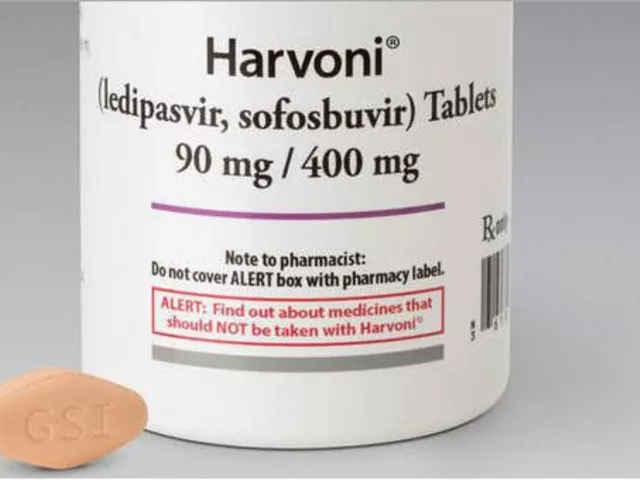
Metformin & Alcohol Risk Calculator
This tool helps you understand your personal risk of lactic acidosis when combining metformin and alcohol. Based on guidelines from the FDA and medical research, it assesses your risk factors and provides personalized recommendations.
When you're taking metformin for type 2 diabetes, you've probably heard the warning: avoid alcohol. But why? It’s not just about blood sugar spikes or hangovers. The real danger lies in something far more serious - lactic acidosis, a rare but life-threatening condition that can strike without warning when metformin and alcohol mix.
What Is Lactic Acidosis?
Lactic acidosis happens when your body produces too much lactic acid and can’t clear it fast enough. Normally, your muscles and liver make small amounts of lactate during energy production. But when levels climb above 5 mmol/L, your blood becomes too acidic. This disrupts how your organs work, especially your heart and lungs. Symptoms include deep muscle pain, trouble breathing, nausea, vomiting, stomach discomfort, and a rapid heartbeat. In severe cases, it leads to confusion, low blood pressure, coma, or death.Metformin itself doesn’t cause lactic acidosis in most people. The risk is extremely low - about 0.03 cases per 1,000 patients each year. But when you add alcohol, especially binge drinking, that risk jumps. The combination doesn’t just add danger - it multiplies it.
How Metformin and Alcohol Work Together to Cause Trouble
Metformin lowers blood sugar by reducing how much glucose your liver makes. But here’s the catch: it also slightly increases lactate production. Your kidneys normally flush out metformin and clear excess lactate from your blood.Alcohol does the opposite. When you drink, your liver prioritizes breaking down ethanol over handling lactate. It uses up NAD+, a key molecule needed to convert lactate back into energy. This slows down lactate clearance - exactly when your body needs it most.
Think of it like two people trying to drain a bathtub at the same time. One person (your kidneys) is slowly pulling water out. The other (alcohol) is turning off the drain. The water - or in this case, lactic acid - starts rising fast. Even if your kidneys are working fine, alcohol can shut down the liver’s ability to help. That’s why cases of lactic acidosis have been reported in people with normal kidney function who drank heavily while on metformin.
The Real Risk: Binge Drinking vs. Moderate Use
Not every drink is equally dangerous. The problem isn’t one glass of wine with dinner - it’s binge drinking. The FDA and European Medicines Agency both warn against excessive alcohol intake, but they don’t define exact limits. That leaves patients guessing.Here’s what the data shows:
- One or two drinks occasionally, with food, and with normal kidney function - most doctors consider this low risk for most people.
- Four or more drinks in two hours for women, five or more for men - that’s binge drinking. This is where the danger spikes.
- Chronic heavy drinking (more than 3 drinks daily) - this increases risk even if you don’t binge. It strains your liver and kidneys over time.
Real-world stories back this up. One Reddit user described muscle cramps and trouble breathing after 10 shots of liquor while on metformin. Another reported ER visits after six beers. Blood tests showed lactate levels above 6 mmol/L - well above the danger threshold.
Here’s the scary part: 68% of people who developed lactic acidosis didn’t realize what was happening. They thought it was just a bad hangover. By the time they sought help, it was too late for some.

Who’s at Highest Risk?
Even though lactic acidosis is rare, some people are more vulnerable:- People with kidney problems - metformin builds up if kidneys can’t clear it. This is the #1 risk factor.
- People over 65 - kidney function naturally declines with age.
- People with liver disease - your liver can’t clear lactate properly.
- People who drink heavily or binge drink - even if kidneys are fine.
- People with heart failure or recent surgery - reduced blood flow to organs makes it harder to clear lactate.
One 2024 case study in the PMC journal described a 65-year-old man with normal kidney function who developed lactic acidosis after drinking heavily at a family gathering. He didn’t have any other risk factors - just metformin and alcohol.
What the Experts Say
The American Diabetes Association says to avoid excessive alcohol while on metformin. But what does “excessive” mean? Dr. Robert A. Rizza from Mayo Clinic says moderate drinking (one drink a day for women, two for men) may be okay for some - if kidneys are healthy and you don’t binge.But Dr. John B. Buse, former ADA president, warns: “The clinical picture is poorly defined because it’s so rare - but when it happens, it’s often fatal.” That’s why most doctors tell patients: if you’re unsure, skip it.
The FDA’s black box warning - the strongest possible - says: “Warn against excessive alcohol intake.” That’s it. No numbers. No exceptions. Just a clear red flag.
What You Should Do
If you’re on metformin, here’s what to do:- Don’t drink on an empty stomach. Alcohol lowers blood sugar. Metformin lowers it too. Together, they can cause dangerous hypoglycemia.
- Avoid binge drinking. Four or more drinks in two hours is a hard line - don’t cross it.
- Never drink heavily during the first 4-8 weeks of starting metformin. Your body is still adjusting.
- Know the warning signs: Unusual muscle pain, trouble breathing, nausea, dizziness, rapid heartbeat. If you feel these, stop drinking and get medical help immediately.
- Get your kidney function checked yearly. A simple blood test (eGFR) tells your doctor if your kidneys can handle metformin safely.
- Consider your B12 levels. Metformin and alcohol both lower vitamin B12. Long-term deficiency can cause nerve damage. Ask your doctor to test this annually.

How This Compares to Other Diabetes Drugs
Metformin is unique among diabetes medications for this specific risk. Other common drugs like GLP-1 agonists (semaglutide), SGLT2 inhibitors (empagliflozin), or DPP-4 inhibitors (sitagliptin) don’t cause lactic acidosis. Their side effects are different - nausea, urinary infections, or weight loss.That’s why metformin remains the first-line treatment. It’s cheap, effective, and safe for most people. But its alcohol interaction is the one thing that sets it apart - and makes it dangerous if ignored.
Phenformin, metformin’s older cousin, was pulled off the market in 1978 because it caused lactic acidosis in 40-64 cases per 100,000 patients each year. Metformin’s rate is about 100 times lower. But that doesn’t mean it’s harmless when mixed with alcohol.
The Bigger Picture
More than 150 million metformin prescriptions are written each year in the U.S. alone. It’s the most prescribed diabetes drug in the world. That’s because it works - and most people take it safely.But every year, a few people die from lactic acidosis triggered by alcohol. These aren’t statistics. They’re fathers, mothers, friends - people who didn’t know the risk was real.
Research is ongoing. A new study called the MALA-Prevention Study, launched in January 2024, is tracking 5,000 metformin users to find out exactly how much alcohol is too much. Results won’t be ready until late 2025. Until then, the safest advice remains: if you’re going to drink, keep it light. If you’re not sure, don’t risk it.
Final Thought
Metformin saved millions of lives. But like any powerful tool, it needs respect. Alcohol isn’t the enemy - reckless use is. You don’t have to give up social drinking entirely. But you do need to understand the line between a glass of wine and a dangerous gamble.Your body is trying to keep you alive. Don’t make it fight harder than it has to.
Can I have one drink while taking metformin?
For most people with normal kidney function, one drink occasionally - and never on an empty stomach - is generally considered low risk. But this isn’t a guarantee. Some people are more sensitive. If you’ve ever had nausea, muscle pain, or trouble breathing after drinking while on metformin, stop immediately and talk to your doctor.
Is lactic acidosis common with metformin and alcohol?
No, it’s rare - about 0.03 cases per 1,000 patient-years. But when it happens, it’s often deadly, with mortality rates between 30% and 50%. That’s why even a small risk matters. You’re not likely to get it - but if you do, it can be fatal without fast treatment.
What are the early signs of lactic acidosis?
Early signs include unusual muscle pain, especially in the legs; trouble breathing; nausea or vomiting; stomach discomfort; dizziness; and a rapid heartbeat. Many people mistake these for a hangover. If you’re on metformin and feel this way after drinking, don’t wait - go to the ER.
Does alcohol make metformin less effective?
Alcohol doesn’t make metformin less effective at lowering blood sugar. But it can cause blood sugar to drop too low - especially if you drink on an empty stomach. The bigger danger isn’t poor control - it’s lactic acidosis, which has nothing to do with blood sugar levels.
Should I stop metformin if I drink alcohol?
Never stop metformin on your own. Stopping suddenly can cause your blood sugar to spike dangerously. Instead, talk to your doctor about your drinking habits. They can help you weigh the risks and adjust your plan - whether that means cutting back, switching medications, or monitoring more closely.
Are there safer alternatives to metformin if I drink regularly?
Yes. Drugs like GLP-1 agonists (e.g., semaglutide) and SGLT2 inhibitors (e.g., empagliflozin) don’t carry a lactic acidosis risk. If you drink regularly or have kidney issues, ask your doctor if one of these might be a better fit. They’re often more expensive, but they eliminate this specific danger.
Can I drink alcohol if I have prediabetes and take metformin preventively?
If you’re taking metformin for prediabetes, you’re still at risk for lactic acidosis. The drug works the same way regardless of whether you have full diabetes. The same rules apply: avoid binge drinking, monitor symptoms, and talk to your doctor. Prevention is better than emergency care.






There are 13 Comments
Vishnupriya Srivastava
Metformin and alcohol? I’ve seen this go wrong too many times. One guy I knew thought one beer was fine. Ended up in ICU with lactate at 8.2. No kidney issues. No other meds. Just metformin and a Friday night. It’s not about being paranoid-it’s about knowing your body’s limits.
Doctors say 'moderate' but they never define it. Meanwhile, ER docs see the fallout. If you’re gonna drink, don’t be the statistic.
And yes, B12 deficiency is real. I got neuropathy from years of metformin + wine. No one warned me.
Test your levels. Seriously.
Matt Renner
While the clinical incidence of lactic acidosis in metformin users remains exceedingly low-approximately 0.03 cases per 1,000 patient-years-the confluence of ethanol metabolism and metformin-induced mitochondrial inhibition creates a physiologically plausible, albeit rare, pathway to metabolic decompensation.
Alcohol-induced hepatic NAD+ depletion impairs lactate clearance, while metformin modestly increases lactate production via inhibition of mitochondrial complex I. This dual mechanism, particularly in the context of binge consumption, may overwhelm compensatory renal excretion-even in patients with normal eGFR.
Therefore, while occasional, food-associated consumption may be acceptable in healthy individuals, the absence of a defined safe threshold in clinical guidelines warrants a precautionary approach. The consequences of underestimating this interaction are disproportionately severe.
Ramesh Deepan
Look, I get it-you wanna have a beer after work. I do too. But if you’re on metformin, don’t turn one into five. I’ve seen friends think they’re fine because their kidneys are good. Then they drink hard at a party and wake up puking and shaking. That’s not a hangover. That’s your body screaming.
My cousin did it. Got admitted. Lost two days of his life. He’s fine now, but he doesn’t touch alcohol anymore.
One drink? Fine. With food? Even better. But if you’re gonna go hard, just don’t take the pill that day. Your liver’s got enough to do.
And yeah-get your B12 checked. It’s free with a blood test. Don’t ignore it.
Wayne Rendall
It is important to clarify that the FDA’s black box warning specifically advises against excessive alcohol intake, yet does not define 'excessive' in quantitative terms. This ambiguity places undue responsibility on the patient to self-regulate based on incomplete information.
Furthermore, while the absolute risk of lactic acidosis is low, the relative risk increases significantly with concurrent alcohol consumption, particularly in the context of binge drinking, as demonstrated in multiple case reports.
It is also worth noting that the pharmacokinetic interaction between metformin and ethanol is not mediated solely by renal excretion, but rather by hepatic metabolic competition, which is frequently underestimated by patients and even some clinicians.
Therefore, while moderation may be acceptable for some, the absence of a universally safe threshold necessitates individualized clinical guidance.
Ifeoluwa James Falola
One drink, with food, no problem. Five drinks? Bad idea. Simple.
Don’t wait for symptoms. If you feel weird after drinking on metformin-go to the ER.
Test your kidneys. Test your B12. Stay smart.
Adam Phillips
we all think we’re the exception until we’re not
metformin is just a tool like a chainsaw
you don’t use a chainsaw drunk
and yet people do
they say one drink is fine
but what’s one drink
is it the one you had last night
or the one you’re gonna have after dinner
or the one after that
and then you wake up and your legs feel like concrete
and you can’t breathe
and you think it’s just a hangover
but it’s not
it’s your body saying goodbye
Julie Lamb
Y’all be so brave with your drinks 😭 but I’m just over here checking my eGFR every year and saying no to happy hour. I love wine but not enough to risk my organs.
My mom had a scare last year-thought it was a stomach bug. Turned out her lactate was 7.1. She’s fine now but she cried for a week.
Don’t be that person who says ‘I’ll be fine’ and then ends up in the ICU.
One drink? Maybe. But I’m choosing peace over pressure. 💙
And yes-B12! I take a supplement now. My nails don’t crack anymore 😊
april kakoske
it’s funny how we treat our bodies like machines we can push until they break
metformin is supposed to help you live longer
but alcohol is the quiet sabotage
you don’t need to give up everything
but you do need to stop pretending you’re invincible
your liver doesn’t care if you’re ‘responsible’
it just knows it’s got too much to clean up
and your kidneys are tired
and your nerves are frayed
and one day you’ll wake up and realize you didn’t even notice the warning signs
because you were too busy trying to feel normal
but normal isn’t worth dying for 🌿
Pradeep Meena
Western medicine is weak. In India we take metformin with chai and no problem. You Americans overthink everything. One drink? You scared of your own body? Just take it and stop crying.
My uncle takes metformin and drinks whiskey every night. He’s 72. Still drives. Still works. You think your science is better? Ha.
Stop scaring people. Drink. Live. Don’t be a baby.
Rishabh Jaiswal
Wait so metformin and alcohol = lactic acidosis? I read somewhere that its only if you have kidney problems but I think that’s wrong because my friend had normal kidney and still got it after 6 beers. So maybe its not just kidneys. Also I think the FDA warning is dumb because they never say how much is too much. Like is it 1 beer or 5? I think its like 3 or more but I’m not a doctor. Also B12 is important but most people don’t know that. I think doctors should test it automatically. Also I heard metformin causes vitamin deficiency but I’m not sure. I think I’m right tho.
Also I read a Reddit post where someone said they took metformin and drank wine and felt fine so maybe its fine for some people. I’m confused.
May Zone skelah
Oh honey, let’s talk about the existential dread of modern pharmacology. We are told to take a drug that was designed to prolong life, yet we are handed a silent, unquantified threat-alcohol-like it’s a moral failing rather than a cultural ritual.
Metformin, this humble, ancient, almost sacred molecule, is the cornerstone of diabetes care. And yet, we are told to avoid the very thing that has been woven into human celebration for millennia-wine, beer, whiskey-because the state refuses to define ‘excessive.’
It’s not just about lactate. It’s about autonomy. It’s about being told you cannot partake in the ritual of communion because your body is too fragile for the world’s indifference.
And then we are told to ‘get your kidney function checked’-as if a single blood test can absolve us of the anxiety of living under the shadow of a 0.03% risk that carries a 50% mortality rate.
What does it mean to be healthy in a world where medicine gives us control and then takes it away with a black box warning that says nothing?
Perhaps the real danger isn’t the alcohol.
It’s the silence.
Dale Yu
everyone says 'one drink is fine' but who the hell defines that
you think your liver gives a fuck about your 'moderate' label
it just sees ethanol and says 'nope not today'
and your kidneys are tired from clearing metformin all week
and suddenly you're gasping and your legs feel like lead
and you think 'it's just a hangover'
it's not
it's your body dying and you didn't even listen
do you really want to be the guy who got a 'warning' and still said 'nah I'm fine'
you're not special
you're just dead
Kshitij Nim
Look, I get it. You’re trying to live a normal life. You don’t want to feel like a patient all the time.
But here’s the truth: one drink with dinner, once a week, with your kidneys checked-that’s not a tragedy. That’s balance.
I’ve helped patients do this safely for years. They don’t binge. They don’t drink on an empty stomach. They know the signs. They test B12.
You don’t have to give up everything. Just give up the recklessness.
And if you’re unsure? Talk to your doctor. Not Reddit. Not your buddy who ‘took it once and lived.’
That’s not courage. That’s gambling with your life.
You’re worth more than that.
Write a comment
Your email address will not be published. Required fields are marked *